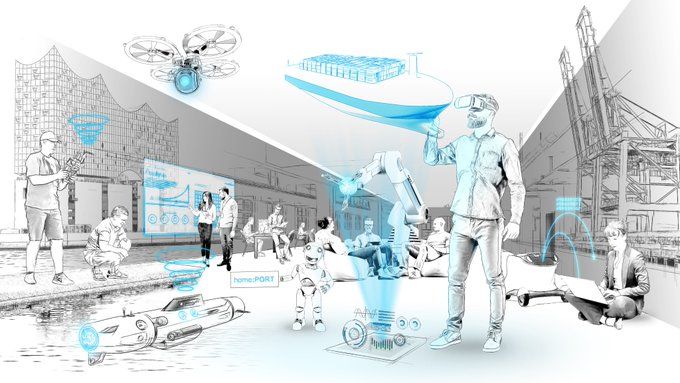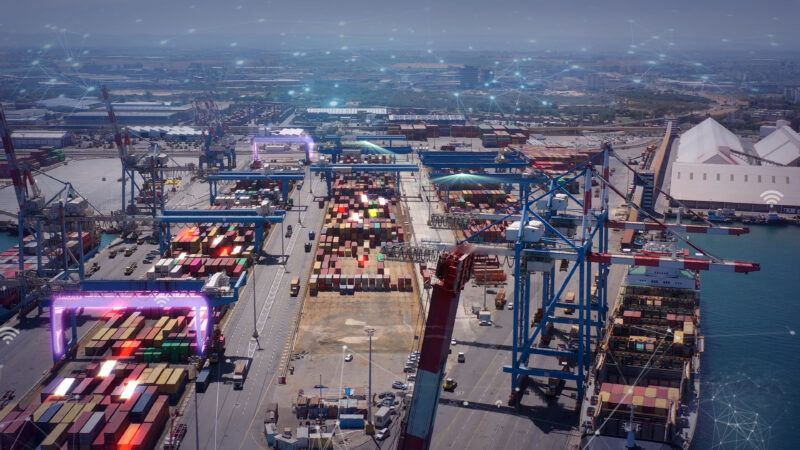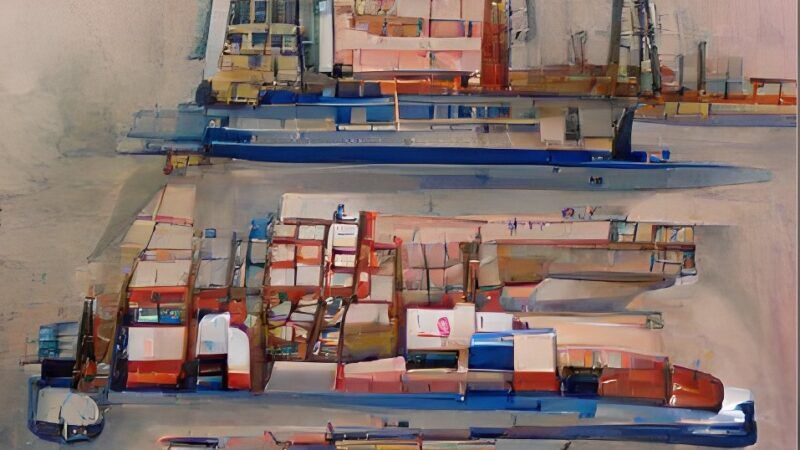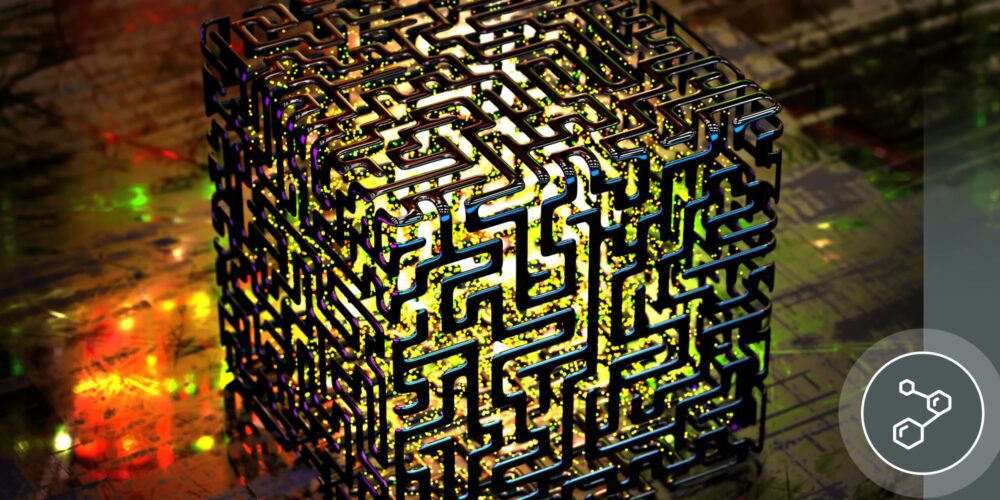 Based on qubits, quantum computing provides a new logic when solving problems. (PierNext/GettyImages)
Based on qubits, quantum computing provides a new logic when solving problems. (PierNext/GettyImages)
Quantum Computing: The first port application of the next great tech disruptor
Quantum computers are millions times faster than supercomputers. They deploy a computing power capable of processing highly complex algorithms in real time, rapidly simulating and iterating on problems that could not be solved until now. After years limited to academic and scientific circles, it is beginning to emerge in the commercial space. In the port area, the Port of Hamburg is the first to use quantum technology to optimize road traffic at its facilities.
 Based on qubits, quantum computing provides a new logic when solving problems. (PierNext/GettyImages)
Based on qubits, quantum computing provides a new logic when solving problems. (PierNext/GettyImages)
What is quantum computing?
Classical computing is formulated on bits, based on binary logic where only two possible outcomes are possible: 1 (true) or 0 (false), since both are mutually exclusive.
Quantum computing, on the other hand, is based on qubits, and adds a third element to 0 and 1, which is the combination of both values, known as a quantum superposition. This third state gives rise to new logics when solving problems and a computing power that enables the creation of new algorithms capable of, for example, encrypting and decrypting highly complex information faster.
However, and continuing with this example, the encryption of a message is based on two numbers, one public and one private, and the message can be decrypted only when both are available. Accessing this message is done by creating two unique numbers related to each other by prime factorization, something extremely complex from a computational point of view.
The mother of all algorithms
This problem was solved in 1994 by Peter Shor, a professor of applied mathematics at the Massachusetts Institute of Technology, who created an algorithm that could be used in a quantum computer to solve this factoring problem. However, in that decade there was not a quantum computer stable enough to run it.
The race to develop these types of computers is spearheaded by IBM, which presented the first commercial model, called the Q System One, with a power of 20 qubits, at CES in Las Vegas in 2019. A year later, Google presented the chip Sycamore, a 54 qubit processor which was able to perform, in a simulation, a calculation that a normal computer would take 10,000 years to calculate, in just 200 seconds.
Intel, the third in contention, also introduced its first quantum control chip, Horse Ridge, last year which allows the integration of quantum processors of up to 128 qubits.

Quantum Computing vs. Technological Dependence
According to Alfonso Rubio-Manzanares, president of the ‘think tank’ barcelonaqbit-bqb, those companies or institutions capable of creating a machine powerful enough to perform these calculations will have an extremely valuable competitive advantage. "Europe has a very important technological dependence on computing since there are no companies that manufacture or design the chips that we put in our computers, they all come from the United States or Taiwan," he warns.
However, the European Quantum Industrial Consortium seeks to change this trend by promoting this disruptive technology in all industrial sectors. One of its promoters is the Spanish company Multiverse Computing, world leaders in quantum algorithms applied to finance.
In which sectors is quantum computing starting to be applied?
Banking is one of the sectors where quantum begins to show green shoots, along with automotive, aerospace and cybersecurity.
In the finance sector, Rubio-Manzanares shares that Multiverse Computing has developed quantum algorithms based on Artificial Intelligence (AI) and Machine Learning that improve the effectiveness of credit card fraud detection by 3.7%, saving an average bank $ 80 million a year.
"Scientists divide problems into two types; P, which can be solved in a potentially known time, and NP, whose resolution time is indeterminate or there is not a known algorithm to solve them in potential time,” he details.
Within this last category of problems, quantum is especially useful in process optimization and classifiers, which is the search for patterns in a large database (for example, in computer vision and image recognition issues). Although both can already be solved by AI, quantum computing can do it at an extremely higher speed and level of complexity.
The MOZART project makes the Port of Hamburg the first in the world to use quantum to solve a problem: optimize its 35 traffic lights that regulate the access and exit of the nearly 20,000 trucks that circulate daily through its facilities
The Port of Hamburg, the first to optimize processes with quantum computing
Optimizing road traffic in the port facilities and in the city of Hamburg is the premise that drove the MOZART project and that makes the Port of Hamburg the first in the world to use quantum to solve an optimization problem: the nearly 20,000 trucks that circulate daily through its facilities depend on the 35 traffic lights that regulate traffic and which have a handicap: they create bottlenecks in the port due to their lack of coordination.
To test whether the project's technology partner Fujitsu's 'Digital Annealer' computational architecture offered quick results, a proof of concept was started in 2019 that sought to manage traffic more intelligently by developing a small traffic network and a simplified traffic control system.
"This computational architecture finds a result very close to the calculated optimum from a multitude of possible combinations and sends it back to the traffic control system in just a few seconds," explains to PierNext Rando Schade, Traffic Project Manager at the Hamburg Port Authority.
‘Digital Annealer’ enables the establishment of a quantum-inspired digital circuit and is designed to respond to large-scale combinatorial optimization problems that are currently intractable with conventional computers.
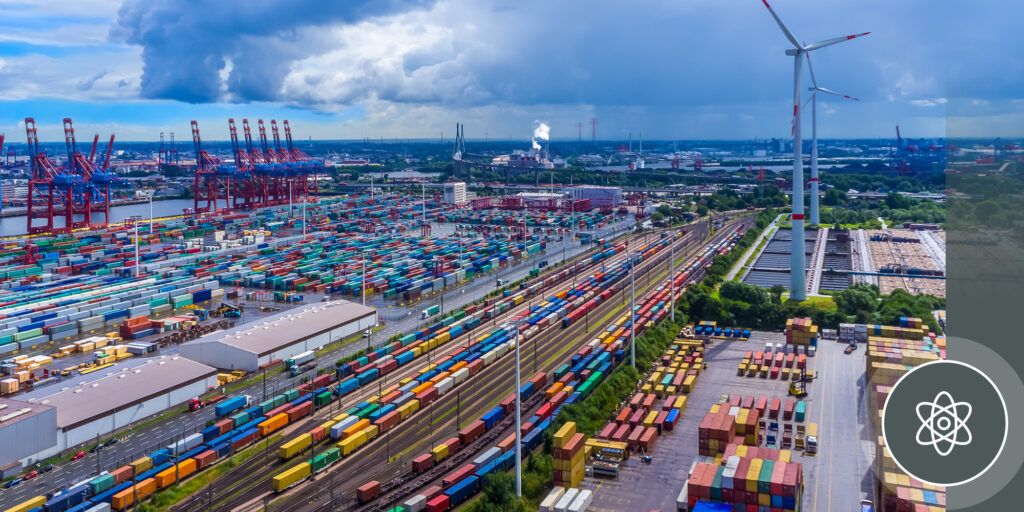
Today, the port has added more details to this traffic model to incorporate related variables, such as security. The model communicates with the computing unit and provides continuous responses to signal changes at the traffic lights. "The model shows us that the traffic gradually becomes more stable due to these interventions," adds Schade.
The next step is to adjust this model to run different variables for a longer time. To do this, the optimizer will connect with the port's traffic control center to receive real-time data supplied by sensors scattered throughout the facilities and mapped in its digital twin.
The infrastructure that allows the application of these models is based on the deployment of 5G. “The 5G transmission technology offers flexible opportunities in the expansion of transport technology compared to wired solutions. And we have already successfully tested a 5G traffic light in the port. Of course, a high reliability of the data connection and a sufficiently dense network of 5G masts are essential,” he points out.
Why quantum and not other technologies?
The port opted for quantum because technologies such as machine learning would only provide a finite number of traffic light phases as an answer to the extremely large number of possible traffic situations and the port wouldn’t t be prepared for traffic situations that have not yet been calculated. Quantum-based optimization continuously calculates the optimal green time distribution. A trained recognition of traffic could only emit approximate traffic light phases, which would not be sufficient in their application case.
The port has extracted positive conclusions to its application, as it has already measured good results for various scenarios compared to conventional traffic light settings.
Schade believes that although this use case is ideal for this technology, other fields of application can be projected, specially on different processes of port logistics, which must be quickly optimized, such as container management.
Although its use is still very incipient, the possibility of solving a series of problems that no other technology can even consider, makes quantum computing the next technological disruptor that has already revolutionized the scientific paradigm. Who knows if in the future it will allow us to travel in time, just as The Avengers did in Endgame to defeat Tanos.



